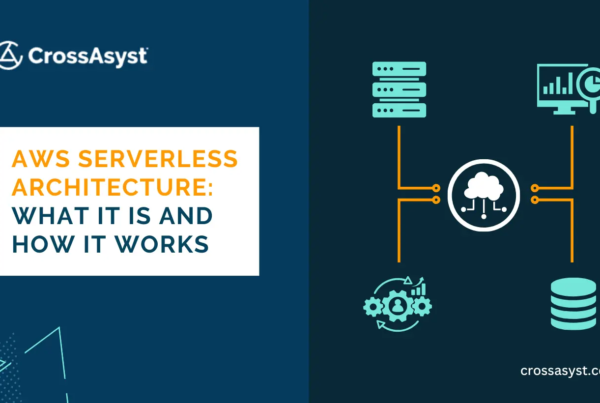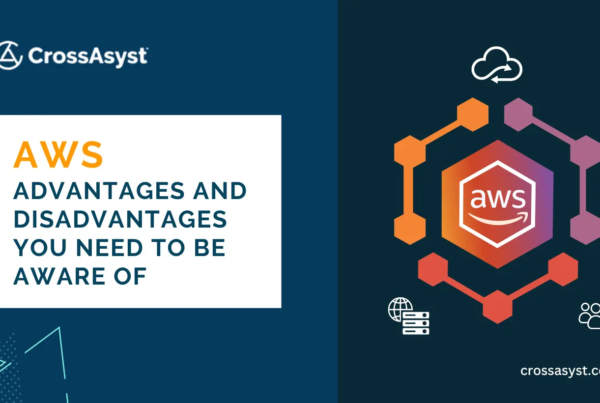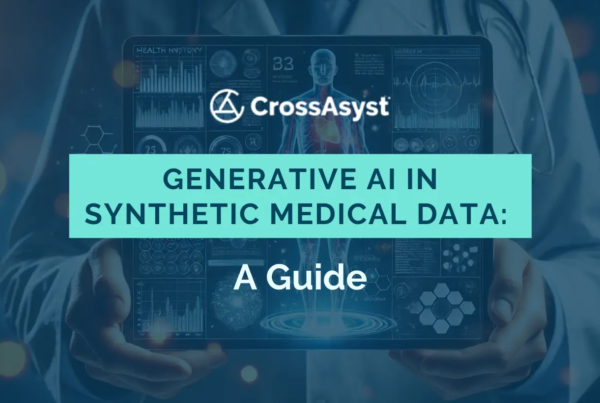Generative AI has been making waves in multiple areas of healthcare in the recent past. One of these areas is medical imaging analysis, where Generative AI’s ability to create new data similar to existing data sets has made it a powerful ally.
In this blog, let’s dive deeper into the impact of generative AI on medical imaging analysis, its applications, ethical considerations and more.
Table of Contents
Understanding Generative AI in Medical Imaging Analysis
A good place to begin would be by defining generative AI and medical imaging analysis.
Generative AI: Creating New Data for Enhanced Analysis
Generative AI stands at the forefront of artificial intelligence, diverging from traditional classification tasks to focus on the creation of new data.
Unlike conventional AI models that classify or label existing data, generative AI techniques, such as Generative Adversarial Networks (GANs) and Variational Autoencoders (VAEs), are designed to generate synthetic data that closely resembles real-world examples.
In the context of medical imaging analysis, this capability holds immense potential for transforming healthcare practices.
The Significance of Medical Imaging in Healthcare
Medical imaging analysis forms an indispensable component of modern healthcare, providing clinicians with invaluable insights into various medical conditions. From X-rays and MRIs to CT scans and ultrasounds, medical imaging technologies offer a window into the inner workings of the human body.
These imaging modalities aid clinicians in identifying abnormalities, understanding disease progression, and guiding treatment decisions. By facilitating early detection and intervention, medical imaging contributes to better patient outcomes and improved quality of life.
The Crucial Role of Generative AI in Medical Imaging Analysis
In medical imaging analysis, generative AI serves as a catalyst for innovation, enabling the generation of synthetic images that closely mirror real medical scans.
By producing images that exhibit similar characteristics to actual patient data, generative AI facilitates more accurate diagnosis, personalized treatment planning, and efficient disease monitoring.
This technology empowers clinicians with enhanced tools and insights, ultimately leading to improved patient outcomes.
Generative AI Techniques for Medical Imaging Analysis
There are two generative AI techniques that are used in medical imaging analysis. Here’s a brief introduction to both of these techniques.
1. Generative Adversarial Networks (GANs)
Generative Adversarial Networks (GANs) have emerged as a powerful tool in medical imaging analysis. Comprising two neural networks – a generator and a discriminator – GANs operate in a competitive framework.
The generator generates synthetic images, while the discriminator distinguishes between real and generated images. Through adversarial training, GANs learn to generate highly realistic images that closely resemble real medical scans.
2. Variational Autoencoders (VAEs)
Variational Autoencoders (VAEs) represent another key technique utilized in medical imaging analysis. VAEs are a type of generative model that focuses on learning the underlying structure of a dataset to generate new data samples.
Unlike traditional autoencoders, VAEs learn to encode data into a lower-dimensional latent space and decode it back into the original data space. This capability enables VAEs to generate new data samples that closely resemble the input data.
Applications of Generative AI in Medical Imaging Analysis
Both of the Generative AI techniques mentioned above, Generative Adversarial Networks (GANs) and Variational Autoencoders (VAEs), have a wide range of applications in medical imaging analysis.
These applications enable clinicians to enhance the quality of medical images, extract meaningful insights, and improve diagnostic accuracy. Here’s a more detailed look at these applications.
Image Synthesis and Reconstruction
Both GANs and VAEs are utilized for image synthesis, reconstruction, and augmentation in medical imaging analysis. They enable the generation of synthetic images to augment existing datasets, improving training outcomes and enhancing the diversity of available data.
Additionally, GANs and VAEs can reconstruct medical images with higher fidelity, aiding in image enhancement and restoration.
Segmentation and Region Identification
Another critical application of generative AI in medical imaging analysis is segmentation, where structures of interest within medical images are identified and delineated. GANs can generate segmentation masks for identifying regions of interest, facilitating precise diagnosis and treatment planning.
This capability is particularly valuable in fields such as oncology and neurology, where accurate delineation of tumors and lesions is essential.
Prediction of Patient Outcomes
Generative AI techniques can also be leveraged to predict patient outcomes based on medical imaging data. By analyzing patterns and features within imaging datasets, these models can forecast disease progression, treatment responses, and long-term outcomes.
This predictive capability enables clinicians to tailor treatment plans and interventions according to individual patient needs, improving overall patient care and outcomes.
Anomaly Detection and Early Intervention
Furthermore, generative AI facilitates anomaly detection in medical images, allowing for the early identification of abnormalities or deviations from normal anatomy. By flagging suspicious findings, these models enable early intervention and monitoring, potentially leading to timely treatments and improved patient outcomes.
This application is particularly valuable in screening programs and population health initiatives aimed at detecting diseases in their early stages.
Challenges, Limitations, and Ethical Considerations
While Generative Adversarial Networks (GANs) and Variational Autoencoders (VAEs) offer significant advantages in medical imaging analysis, it’s essential to acknowledge their limitations and the ethical considerations surrounding their use.
Technical Challenges
Both GANs and VAEs may encounter technical challenges that affect their performance in medical imaging analysis. For example, GANs may struggle with issues such as mode collapse, where the generator network fails to produce diverse outputs, leading to limited variability in generated images.
Similarly, VAEs may produce samples with lower fidelity compared to GANs, impacting the quality of synthesized images. Moreover, both techniques require large amounts of training data and computational resources, posing challenges in practical implementation.
Therefore, it’s crucial to carefully evaluate the suitability of each technique for specific tasks and consider potential trade-offs between accuracy and computational efficiency.
Ethical Considerations
The widespread adoption of generative AI in medical imaging analysis is accompanied by several ethical considerations that must be addressed to ensure responsible and ethical use.

Data Privacy: Safeguarding patient data and ensuring compliance with data protection regulations are paramount. Healthcare organizations must implement robust security measures to protect patient privacy and prevent unauthorized access to sensitive medical information.
Algorithmic Bias: Generative AI models are susceptible to biases inherent in training data, which can lead to discriminatory outcomes. It’s essential to mitigate these biases through careful data curation and algorithmic fairness techniques to ensure equitable healthcare outcomes for all patient populations.
Interpretability of Models: Ensuring transparency and explainability of generative AI models is crucial to instill trust among clinicians and patients. Clinicians must be able to understand how these models arrive at their predictions and assess their reliability in clinical decision-making.
Regulatory Frameworks: Navigating evolving regulatory landscapes is essential to ensure the responsible and ethical use of generative AI in healthcare. Healthcare organizations must comply with existing regulations and guidelines governing the use of AI in medical devices and data privacy to mitigate legal and compliance risks.
Risk Mitigation Strategies
While generative AI holds immense potential to revolutionize medical imaging analysis, it also presents certain risks that must be addressed to ensure its responsible and ethical use. Here are some risk mitigation measures that organizations must prioritize.
Careful Data Curation
- Ensuring the quality and integrity of training datasets is crucial to minimize the risk of biased or misleading outcomes.
Organizations should carefully curate datasets, removing any irrelevant or biased data that could compromise the accuracy and reliability of generative AI models.
- Implementing rigorous validation processes to verify the accuracy and representativeness of training data can help mitigate the risk of generating flawed or misleading results.
Bias Detection
- Implementing mechanisms to identify and mitigate biases in generative AI models is essential to ensure fair and equitable outcomes.
Regular audits of algorithms can help detect and address biases, ensuring that generative AI models produce unbiased and reliable results.
- Incorporating diverse and representative training data from diverse patient populations can help reduce the risk of bias in generative AI models. By training models on data from a variety of sources, organizations can ensure that AI systems are inclusive and provide equitable healthcare outcomes for all patients.
Encryption and Data Security
- Implementing robust encryption protocols and access controls is essential to protect sensitive patient data from unauthorized access or breaches.
Organizations should use encryption technologies to secure data both at rest and in transit, ensuring that patient information remains confidential and secure.
- Implementing strict access controls and authentication mechanisms can help prevent unauthorized access to patient data. Organizations should restrict access to sensitive data to authorized personnel only and monitor access logs for any suspicious activity.
Adherence to Ethical Standards
- Upholding ethical principles and guidelines is essential to guide the responsible development and deployment of generative AI in healthcare settings.
Organizations should adhere to established ethical standards and frameworks, ensuring that AI systems are developed and used in a manner that prioritizes patient safety, privacy, and well-being.
- Maintaining transparency and accountability throughout the AI development lifecycle is crucial to building trust among clinicians, patients, and regulatory authorities.
Organizations should provide clear documentation and explanations of AI systems’ capabilities, limitations, and potential risks, enabling stakeholders to make informed decisions about their use in healthcare settings.
Closing Thoughts
While generative AI is still relatively new, it is making its presence felt in leaps and bounds across industries. The healthcare industry is already being revolutionized by the applications, innovations and sheer potential of this new technology.
We at Crossasyst recognize this, and our development team is breaking new ground everyday as we gear up to offer our clients a host of Ai-powered custom software solutions.
With over a decade of experience in building custom software for global clients across business verticals, we pride ourselves in developing market-disrupting software solutions and in being invested in our clients’ success.
Want to learn more about CrossAsyst’s custom software services? Book a meeting with us today





